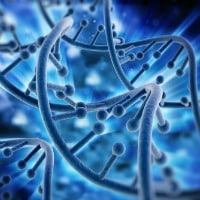Most genetic disorders that result in sterility or childhood death are caused by recessive mutations, Whereas DNA sequence variants are harmless when a person carries only one copy, when such mutations are present at both copies (where one copy was inherited from each parent), they can cause devastating diseases. Recessive disease mutations are much more common than those that are harmful even in a single copy, because such “dominant” mutations are more easily eliminated by natural selection. Ziyue Gao, from the University of Chicago (Illinois, USA), and colleagues have devised a new approach to estimate the average number of mutations per person that cause disease when inherited from both parents. The team modeled the genetic profiles of the Hutterites, a religious community that settled in North America in the 1870s, who keep meticulous genealogical records and live a communal lifestyle that ensures uniform access to healthcare and food. The investigators worked closely with a group of Hutterites from South Dakota for two decades, studying genetic contributions to disease using a large 13-generation family tree that traces the ancestry of more than 1,500 living people. They used the ancestry tree to estimate the number of recessive disease mutations carried by the group’s founders in the 18th and 19th century, utilizing previously compiled comprehensive records on the frequency of disorders that cause sterility or childhood death in the study population. Using this information, the team estimated that there were around three mutations of this type for every five people among the original founders. But that only counted mutations that allow children carrying two copies to survive at least until birth. Based on estimates of the proportion of recessive mutations that cause death during fetal development, the team concluded that each founder carried approximately one to two recessive mutations that cause sterility or death before adolescence. The researchers posit that isolated founder populations like those in the study are expected to carry fewer harmful recessive mutations than the general population, which is one of several reasons why we expect a slightly higher number than one to two mutations on average. This number also excludes recessive mutations carried on the sex chromosomes. The study authors write that: “Comparison to existing estimates in humans suggests that a substantial fraction of the total burden imposed by recessive deleterious variants is due to single mutations that lead to sterility or death between birth and reproductive age.”
Hidden Disease Burden
Ziyue Gao, Darrel Waggoner, Matthew Stephens, Carole Ober, Molly Przeworski. “An Estimate of the Average Number of Recessive Lethal Mutations Carried by Humans.” Genetics April 2015 199: 1243-1254.
RELATED ARTICLES




